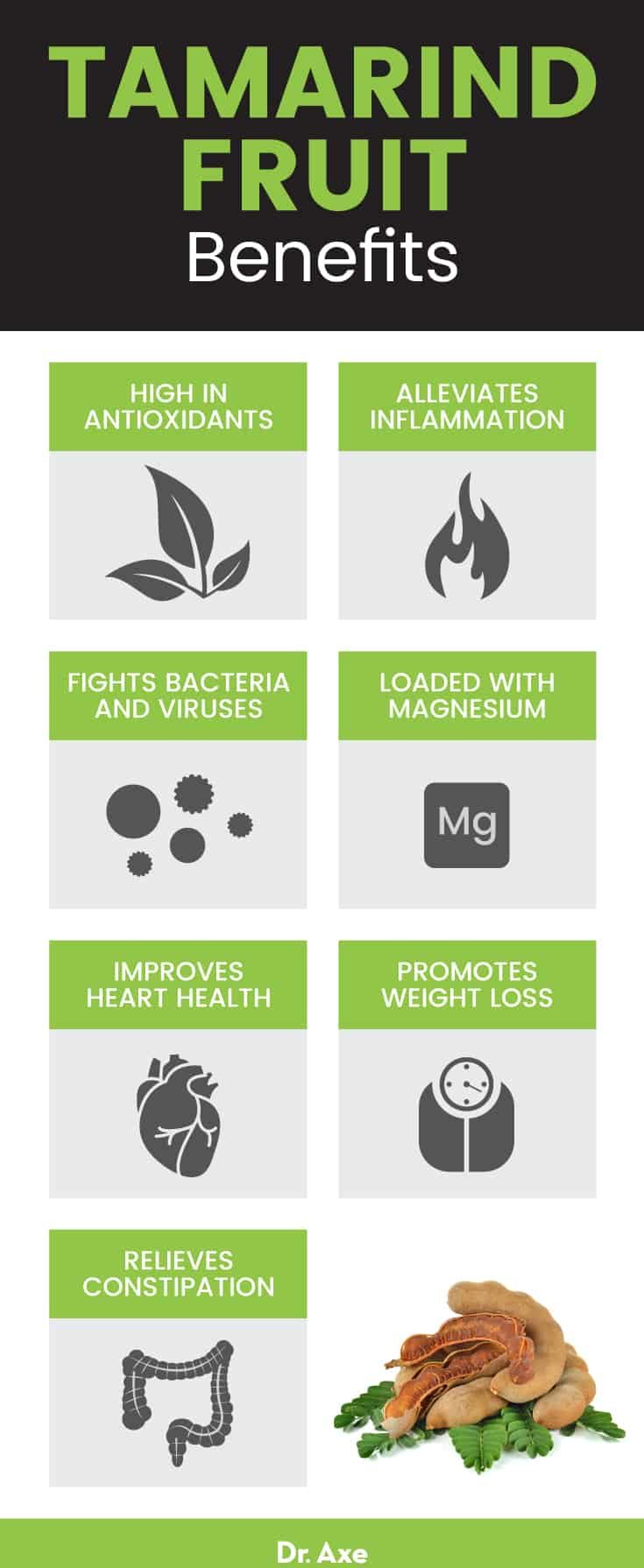This Dr. Axe content is medically reviewed or fact checked to ensure factually accurate information.
With strict editorial sourcing guidelines, we only link to academic research institutions, reputable media sites and, when research is available, medically peer-reviewed studies. Note that the numbers in parentheses (1, 2, etc.) are clickable links to these studies.
The information in our articles is NOT intended to replace a one-on-one relationship with a qualified health care professional and is not intended as medical advice.
This article is based on scientific evidence, written by experts and fact checked by our trained editorial staff. Note that the numbers in parentheses (1, 2, etc.) are clickable links to medically peer-reviewed studies.
Our team includes licensed nutritionists and dietitians, certified health education specialists, as well as certified strength and conditioning specialists, personal trainers and corrective exercise specialists. Our team aims to be not only thorough with its research, but also objective and unbiased.
The information in our articles is NOT intended to replace a one-on-one relationship with a qualified health care professional and is not intended as medical advice.
Tamarind Fruit Benefits Weight Loss, Heart Health & More
September 24, 2018

Classified as both a legume and a fruit, the tamarind fruit is unique in just about every way. From its pod-like appearance to its distinct sour-sweet taste, it’s true that there’s nothing ordinary about this tasty fruit.
The tamarind fruit is a staple ingredient in cuisines around the world. Used to make everything from candy in the Caribbean to sauces and stir-fries in Asia, tamarind is one of the few fruits that can be perfectly integrated into both sweet and savory dishes alike.
In addition to its many purported medicinal properties, tamarind fruit may also help boost heart health, encourage weight loss, relieve constipation, and fight off harmful bacteria and viruses.
It also contains an impressive array of nutrients and antioxidants, making it an excellent addition to a well-balanced diet.
What Is Tamarind Fruit?
The tamarind tree, known by its scientific name, Tamarindus indica, is native to Africa but found in many other tropical areas around the world. It produces the tamarind fruit, a tropical fruit with bean-like pods, seeds and an edible pulp that boasts a wide array of potential uses.
The tamarind flavor is sour yet sweet, and the pulp gets sweeter and turns into tamarind paste as it continues to ripen. In cooking, it is used to make everything from savory dishes to sweets and jams. Tamarind paste is also an ingredient in many sauces, drinks and even chutneys. Raw tamarind can also be eaten and enjoyed by simply removing the fruit from the tamarind pods.
Historically, tamarind fruit has also been used medicinally to help with a range of conditions, including constipation, fever and peptic ulcers.
The pulp is sometimes also used to polish bronze, copper and brass utensils, lamps and statues thanks to its content of tartaric acid, a compound that helps remove tarnish.
In addition to its delicious flavor and versatility, however, the tamarind fruit also comes with a long list of potential health benefits, from supplying important nutrients to reducing inflammation and keeping your heart healthy.
Health Benefits
- High in Antioxidants
- Alleviates Inflammation
- Fights Bacteria and Viruses
- Loaded with Magnesium
- Improves Heart Health
- Promotes Weight Loss
- Relieves Constipation
1. High in Antioxidants
Tamarind fruit is packed with polyphenols, or plant compounds that have powerful antioxidant properties. Antioxidants help fight against free radicals, which are harmful compounds that damage cells and cause chronic disease.
Tamarind fruit is high in a variety of polyphenols, including apigenin, catechin, procyandin B2 and epicatechin, among others. (1) The high amount of antioxidants found in tamarind could help decrease oxidative stress caused by free radicals and lead to a lower risk of certain conditions like cancer, heart disease and diabetes. (2)
Incorporate tamarind into a diet high in other high-antioxidant foods to have an even greater impact against the damage and oxidative stress formed by free radicals.
2. Alleviates Inflammation
Thanks to its high antioxidant and polyphenol content, tamarind fruit may be able to relieve chronic inflammation. Inflammation is a normal part of the immune response, but chronic inflammation is at the root of most diseases, including cancer, Alzheimer’s disease and asthma.
Historically, the tamarind fruit has been widely used as a medicinal plant to treat many conditions related to inflammation. The leaves and bark, for instance, have been used to promote wound healing, bronchitis and inflammation of the eye.
A 2015 study published in Scientific Reports also found that tamarind seed has anti-arthritic properties and is able to decrease several markers of inflammation in the body. (3)
In addition to tamarind, other anti-inflammatory foods include turmeric, ginger, leafy green vegetables and berries.
3. Fights Bacteria and Viruses
Tamarind contains several compounds with antimicrobial properties that have been shown to fight off both bacteria and viruses. In the past, it has been used to treat conditions like malaria, parasitic infections, dysentery and even respiratory problems. (4)
A test-tube study published in Pharmacognosy Magazine showed that tamarind extract was effective against Bacillus subtilis, a strain of bacteria, while tamarind essential oil worked against several different strains of bacteria. (5) Another study published in the International Journal of Molecular Sciences found that tamarind extract exhibited antibacterial activity against multiple types of bacteria, including E. coli and salmonella. These are two strains of bacteria that can cause infections, resulting in symptoms like diarrhea, abdominal pain and vomiting. (6)

4. Loaded with Magnesium
Tamarind fruit is bursting with magnesium, an important mineral that plays a central role in many aspects of health. Magnesium is important for bone formation, regulating heart rhythm, muscle contractions and blood sugar control, among other things. (7)
According to one 2012 study out of the Center for Magnesium Education & Research in Hawaii, nearly half of Americans consumed less than the daily recommended amount of magnesium. (8) However, incorporating magnesium-rich foods like tamarind into your diet can make it easy to meet your magnesium needs. Just one cup of raw tamarind pulp can meet 28 percent of the daily requirement for magnesium.
In addition to tamarind, other foods high in magnesium include spinach, pumpkin seeds, yogurt, kefir, almonds and black beans.
5. Improves Heart Health
Heart disease is one of the leading causes of death worldwide, with coronary heart disease accounting for about one in six deaths in the United States and causing one death every minute. (9) Some studies have found that tamarind fruit can benefit heart health by reducing several heart disease risk factors.
A study out of the University of Dhaka in Bangladesh and published in the Pakistan Journal of Pharmaceutical Sciences showed that dried and pulverized tamarind pulp significantly reduced total and bad LDL cholesterol along with diastolic blood pressure. (10)
Another animal study gave hamsters tamarind pulp and found that it decreased total and LDL cholesterol along with triglyceride levels. (11)
Use tamarind in conjunction with other cholesterol-lowering foods, such as fish oil and garlic, to boost heart health even more.
6. Promotes Weight Loss
Research has found some promising results demonstrating that tamarind fruit could have an anti-obesity effect and may be able to aid in weight loss. Specifically, tamarind seeds may contain a compound that blocks the activity of trypsin, an enzyme involved in the breakdown of protein. Some animal studies have found that inhibiting the activity of trypsin can help reduce food intake. (12)
For example, in a 2015 animal study, this compound was found to decrease the body weight of rats by lowering their food consumption. (13)
However, keep in mind that tamarind fruit is relatively high in calories and sugar. Enjoy this tasty fruit in moderation in combination with a healthy diet and regular exercise to get the best results in terms of long-term weight loss.
7. Relieves Constipation
For centuries, tamarind has been used as a common natural remedy to promote regularity and prevent constipation. This may be in part due to its fiber content. Each serving of tamarind contains a good amount of fiber, with 6.1 grams in just one cup of raw pulp.
A review made up of five studies published in the World Journal of Gastroenterology showed that increased fiber intake can increase stool frequency for those with constipation. (14)
Other natural laxatives that can help support regularity include chia seeds, flaxseed, high-fiber fruits and coconut water.
Nutrition Facts
Tamarind is high in many nutrients, including thiamine, magnesium, potassium and iron. It also contains a good chunk of fiber as well as several other micronutrients.
One cup of raw tamarind pulp contains approximately: (15)
- 287 calories
- 75 grams carbohydrates
- 3.4 grams protein
- 0.7 gram fat
- 6.1 grams dietary fiber
- 0.5 milligram thiamine (34 percent DV)
- 110 milligrams magnesium (28 percent DV)
- 753 milligrams potassium (22 percent DV)
- 3.4 milligrams iron (19 percent DV)
- 136 milligrams phosphorus (14 percent DV)
- 2.3 milligrams niacin (12 percent DV)
- 0.2 milligram riboflavin (11 percent DV)
- 88.8 milligrams calcium (9 percent DV)
- 4.2 milligrams vitamin C (7 percent DV)
In addition to the above nutrients, tamarind pulp also contains some copper, vitamin K, vitamin B6 and folate.
Tamarind Fruit vs. Sour Tamarind
Tamarind fruit has a distinct sour-sweet flavor, and the tamarind taste is often described as a mix of lemons, dates and apricots all at once. However, tamarind is available in a range of flavors, from very sweet to very sour.
While these all come from the same fruit, they vary based on ripeness. As tamarind pulp becomes more ripe, it becomes sweeter and more thick and paste-like.
Certain degrees of sourness may be better suited for specific types of cuisine. For example, Indian cooking usually uses the sour, raw pods to bring a burst of flavor to meat dishes while the sweeter pulp is used in some Caribbean countries to make candies.
Where to Find and How to Use
Tamarind is available in a few different forms. Raw tamarind pods are the least processed and can be opened to extract the pulp from the pods. Pressed blocks are also available and are formed by removing the seed and shell to press the pulp into a block. Finally, tamarind concentrate is made from pulp that has been boiled and may include the addition of preservatives. Tamarind spice is also available and is used as a souring agent and seasoning for foods.
If you’re wondering where to buy tamarind fruit fresh, try looking at your local specialty Asian or Indian market. More processed forms of tamarind can also be purchased through some online retailers as well.
Tamarind is a typical ingredient in many types of cuisines around the world. In India, tamarind pods are used to season meat, fish and rice dishes while in areas like Jamaica, Cuba and the Dominican Republic, tamarind candy is a common treat made by mixing tamarind pulp with sugar. In Thailand, meanwhile, tamarind sauce is used to flavor a variety of dishes, from stir-fry to pad thai. Tamarind is also commonly used in Central and South America as well as the Caribbean.
If you’re ready to give this sour-sweet fruit a try, here a few recipes to get you started:
- South Indian Tamarind Glazed Salmon
- Chopped Kale and Chickpea Salad with Tamarind Vinaigrette
- Roasted Coconut, Lime and Tamarind Curry
- Roasted Tempeh with Tamarind Glaze, Sweet Potatoes and Roasted Chickpeas
History
Although believed to have originated in Africa, tamarind fruit is now found in tropical regions around the globe. In fact, it has been cultivated for so long in India that some consider it to be indigenous there.
It was later brought to other areas, including South Asia, Arabia, Australia, Taiwan and China. In the 16th century, it was introduced to Mexico as well as other areas in Central and South America by Spanish and Portuguese colonists where it has since become a popular ingredient.
Today, India is considered the world’s biggest producer of tamarind. Still, it remains a dietary staple of people from diverse areas around the world.

Risks and Side Effects
Tamarind may cause an allergic reaction in some people. If you have an allergy to other legumes, you may be allergic to tamarinds. If you experience any food allergy symptoms like swelling, stomach cramps, itching, shortness of breath or difficulty breathing, discontinue use immediately and report symptoms to your doctor.
Tamarind pulp is also high in carbohydrates and sugar, with about 75 grams of carbs per cup. If you have diabetes, you should keep intake in moderation to prevent spikes in blood sugar.
Candy made from tamarind is also considered a potential source of lead exposure. Lead is a toxic heavy metal that can cause serious health problems as a result of exposure, especially in children. (16)
To get the most health benefits from tamarind, minimize the potential for lead exposure and keep carb, sugar and calorie intake in check, stick to raw tamarind rather than candy or concentrate forms. Not only is this the least processed form of tamarind, but it’s also less likely to have additives or harmful ingredients.
Final Thoughts
- The tamarind tree produces a pod-like fruit called the tamarind fruit, which is also considered a legume.
- Although native to Africa, the pulp of the tamarind fruit is used in recipes around the world, from India to Thailand to the Caribbean and beyond. It has a sour-sweet taste and is available in many different forms.
- Tamarind has been used medicinally to treat many conditions, such as fever or peptic ulcers. It may also promote weight loss, prevent constipation, improve heart health, reduce inflammation, and fight off bacteria and viruses.
- The pulp of tamarind fruit contains a good amount of fiber, magnesium, iron, thiamine and potassium, but it is also high in carbohydrates and sugar — so consume in moderation and opt for the raw form over more processed versions.

